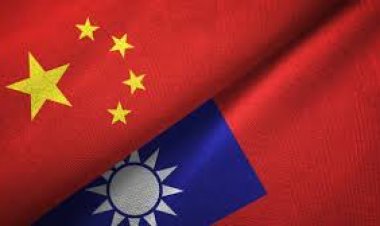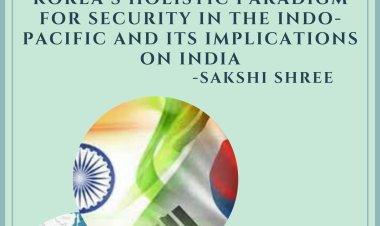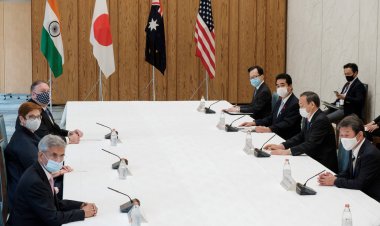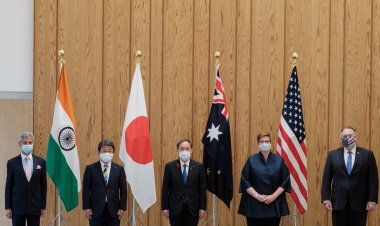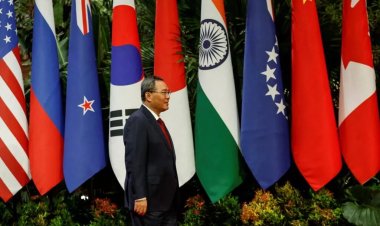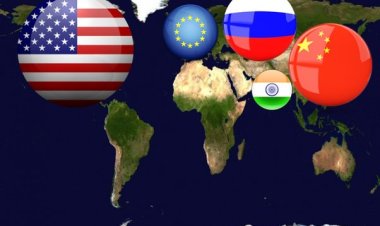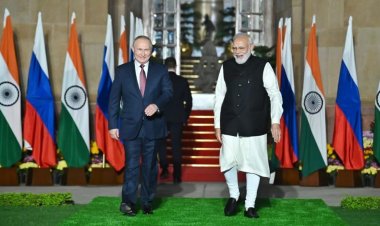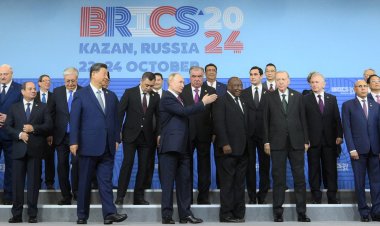India's core challenge is the choice between maritime and continental outreach, not a balance between the US and Russia
India needs to make a strategic choice between maritime and continental outreach due to the perpetual security threats it faces, and not a diplomatic choice between the US and Russia.

Analysis
By Niranjan Marjani
The leaders of the Quadrilateral Security Dialogue (the Quad) countries held their first summit on March 12. The summit, held virtually, has taken definitive steps towards the formalization of the Quad as a grouping. The Quad, which has been more of a conceptual entity for years, started taking shape rapidly in 2020. The need for the Quad was justified following China's growing assertiveness in the Indo-Pacific region in general and the South China Sea in particular, even amid the COVID-19 pandemic.
The summit was followed by a series of visits to India. First, the United States' (US) Defence Secretary Lloyd Austin came on his first overseas visit to India. After that, the US Special Presidential Envoy for Climate Change John Kerry arrived in India which coincided with Russia’s Foreign Minister Sergey Lavrov’s visit to India.
The back-to-back official visits from the US and Russia in the backdrop of the Quad Summit have brought to the forth not only the changing global geopolitical dynamics but also the diplomatic challenge that awaits India.
India's enthusiastic response to the Quad, an outcome of its growing proximity to the US, raises the question as to whether these developments would affect India-Russia relations. India's close relations with Russia are several decades old starting from India's independence. On the other hand, the growth of India-US relations is a recent phenomenon starting with India's opening up of its economy in 1991. In the context of world politics, India-Russia relations thrived during the Cold War period while India-US relations witnessed meaningful development only since the end of the Cold War.
As India has grown closer to the US, Russia's relations with China are getting stronger. Also, Russia indirectly suggested that India stay away from the Quad. It would seem that India has got caught in the rivalry between the US on one side and Russia and China on the other. However, over the years, India has managed to balance its relations with both the US and Russia. Despite growing India-US relations, India-Russia relations have not suffered much. India has robust relations with both countries, especially in the defence sector. Russia remains one of the top arms suppliers to India along with the US, France and Israel.
With each power looking to protect its geopolitical interests, the question is not whether India would have to do a diplomatic balancing between the US and Russia. The question is how India would manage its outward-looking geopolitical ambitions in continental and maritime domains.
India’s strategic thinking
Since ancient times to as recent as the 18th century, India has had a rich maritime history. However, the maritime sector was relegated to secondary importance due to two reasons. One was that the British systematically dismantled the indigenous maritime sector in India. Two, due to security concerns in the post-independence era, India had to mostly focus on the continental domain.
Perpetual security threats from Pakistan and China through the land border in the northwest and northeast respectively led India to employ a major part of its strategic thinking and resources to the continental issues. Wars with Pakistan and China and Pakistan-sponsored cross-border terrorism over the decades meant that India’s fixation with the continental strategic thinking only kept on increasing.
These have been the principal limitations for India to effectively project itself as a sea power for several decades following independence. These limitations became more pronounced from 1991 onwards when India adopted liberalization to boost its economy. Growth in international trade required a fully developed maritime infrastructure since most of the trade has been sea-borne. India lacked this infrastructure. Further, the maritime concerns were highlighted during the terror attack in Mumbai on November 26, 2008 (the 26/11 terror attack). The terrorists carrying out this attack had landed in Mumbai through the sea route. Overall, these incidents have manifested the lack of attention India's maritime sector had received over the decades.
Prime Minister Narendra Modi has sought to address these issues as he attempted to make India's foreign policy more outward-looking. For the past few years, India has accommodated the maritime domain in its diplomatic and strategic discourse. This is evident from an increased focus on Southeast Asia through Act East Policy. Besides this, India has made efforts to cover the vast expanse of the Indo-Pacific Region with outreach to several countries such as Australia, Fiji, Mauritius, Seychelles, Kenya and South Africa to name a few.
What are India’s strategic challenges?
India's focus on the maritime domain has been developing parallel to its growing proximity to the US and the gradual shaping up of the Quad. At the same time, India has also sought to increase its outreach to Afghanistan, Central Asia and Eurasia.
Despite the possibility of territorial connection with these landlocked regions, India's enmity with Pakistan is an impediment. Consequently, India has established connectivity with this region, although limited, through Iran. India is developing Iran's Chabahar Port which would allow India to connect with Afghanistan, Central Asia and Eurasia. Although in a developmental stage, the port has a limited operational capacity to send food shipments to Afghanistan.
However, while the US supports India against China in the Indo-Pacific Region, West and Central Asia present a different scenario. The US' troubled relationship with Iran has always cast a spell on India-Iran relations. India had even stopped buying oil from Iran after the US imposed sanctions on Iran. India is still waiting for the sanctions to end so that it can again start buying the Iranian oil.
The US has always preferred Pakistan as its partner in Afghanistan. All through the Afghan Peace Process, Pakistan has been an important mediator between the US and the Taliban. Pakistan's close relations with the Taliban make the former a primary player in Afghanistan. Compared to Pakistan, India's role has been very restricted in Afghanistan, mostly focused on infrastructure development. Further, with Russia's growing proximity to Pakistan and China strengthening its footprint in Iran through the 25-year deal, India has a difficult road ahead in the region. The flux in the region is caused by the regional and extra-regional powers trying to gain stakes. Since Pakistan is the key factor for outreach to Afghanistan, most of the powers have allied with Pakistan. It has left very little room for India to manoeuvre.
So, while India is set to expand its footprint in the maritime, uncertainty looms over the continental domain. It implies that India may have a strategic choice to make between maritime and continental outreach and not a diplomatic choice between the US and Russia.
Niranjan Marjani is a Political Analyst and Researcher based in Vadodara, India. He tweets at @NiranjanMarjani
Disclaimer: This paper is the author's individual scholastic contribution and does not necessarily reflect the organisation's viewpoint.

